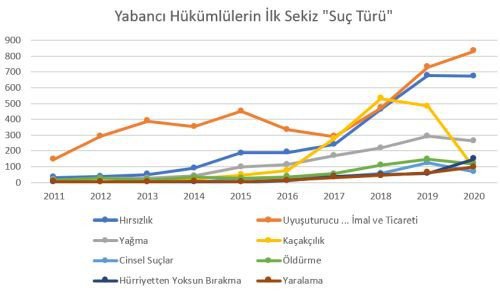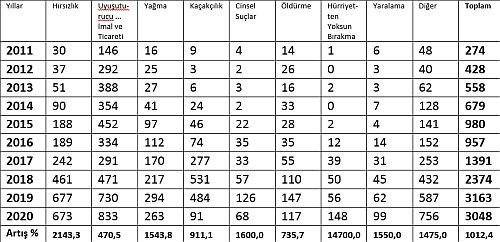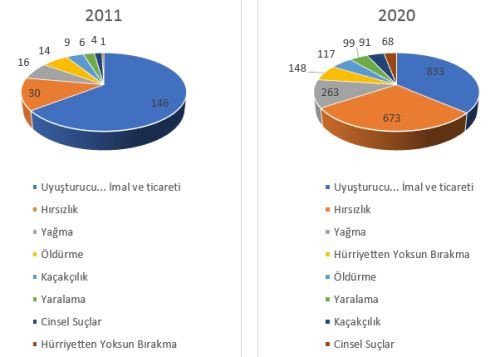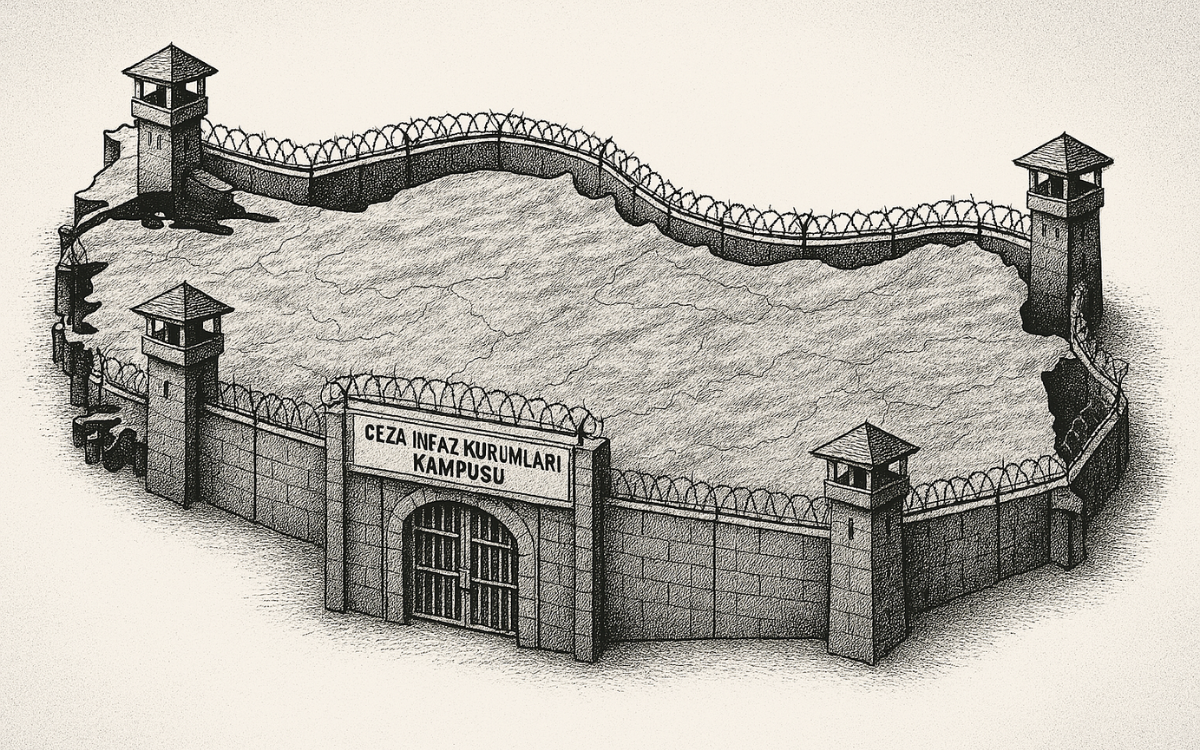Click to read the article in Turkish
Due to the increase in the number of prisoners in Turkey, we are witnessing an increase in the number of foreign national prisoners as well.
While the number of all prisoners increased by 108 percent in 10 years, the increase in the number of foreign prisoners was 354.7 percent. With this increase, the share of foreign prisoners in the prison population rose from about 1.8 percent to about 3.8 percent.
Nevertheless, in order to evaluate this increase more accurately, the increase in the country's foreign population should be compared with the number of foreign prisoners.

The table above shows that there is an increase in the number of foreign prisoners due to the increase in the foreign population. This finding also reveals the reason for the increase in the number of foreign prisoners in Turkey is two times higher than the increase in the general prisoner population. For foreigners, there is an increase in the prison population due to the increase in their population.
After the determination of the "direct ratio between the foreign population and the foreign prisoner population," it is also possible to look at the effect of the increasing and differentiating foreign population regarding "types of crime".[3]
While the Turkish Statistical Institute (TurkStat) figures do not include data on the general prisoner population, which comprises those who are arrested and convicted, it gives information about the "types of crimes" of the convicts. The graphic below shows the distribution of the first eight "types of crime" that caused foreign convicts to be "convicted:"


This graphic and table show that, in 10 years;
1 - The number of foreign convicts who were sent to prison has increased more than 10 times.
2 - "Manufacturing and trading of drugs or stimulants" is one of the leading reasons for the imprisonment of foreign convicts. While this "type of crime" was the reason for more than half of the convictions in 2011, it decreased to 27 percent in 2020.
3 - An increase was observed in types of crimes other than "drugs" and this increase accelerated after 2017.
It will be sufficient to compare the two graphs of 2011 and 2020 in order to see more clearly which crime types were prevalent in 10 years.

These two graphs show that within 10 years, "theft" and "looting", two types of crimes that can be considered as economically based, prevailed among the crime types.
Although there was an unexplained decrease in 2020 compared to the increase in previous years, there was a serious increase in the crime of "smuggling."
In addition to these three "types of crime", there has been a serious increase in the crimes of "deprivation of liberty," "sexual crimes" and "injury", the numbers and rates of which were very low 10 years ago. This situation shows that while foreign convicts were mainly convicted for "production and trade of drugs or stimulants" 10 years ago, they have now also become perpetrators of today's economically-based "crimes such as "theft," "looting," "smuggling," as well as "killing", "injury", "sexual crimes", "deprivation of liberty," with their new foreign socio-economic status. (ME/AS/VK)





.jpg)

